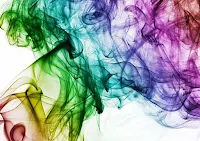 |
Personal Branding-Impact &
Nuances of Color Choices |
Introduction
In today’s highly competitive world, creating and building an authentic personal brand is crucial for standing out, whether you are an entrepreneur, professional, or influencer. Personal branding has become an essential tool to make an impression in both work and social circles. Your personal brand mirrors your values, strengths, and character. It's an extension of who you are, and how you show it through fashion can affect how others see you. One of the best ways to build a genuine personal brand is through fashion. Fashion isn't just about clothes; it's about how you show yourself to the world. By grasping color psychology and using good grooming tips, you can shape a personal brand that shows your identity and clicks with your audience. Fashion and color psychology along with grooming play a big role in making your identity unique. Creating a genuine personal brand for Pakistanis calls for understanding the cultural, psychological, and environmental factors that shape popular fashion trends. What's more, by weaving in Islamic values, financial savvy, and smart investment decisions, you can ensure your brand stays rooted, ethical, and makes a real difference.
“personal branding is the synthesis of all the expectations, images, and perceptions it creates in the minds of others when they see or hear your name” Haanif Abdullah
Personal Branding in Pakistani Context
A genuine personal brand for Pakistanis needs understanding of the cultural, psychological, and environmental effects on popular fashion choices. Also, including Islamic values, money smarts and wise investment picks makes sure your brand stays down-to-earth, moral, and influential.
Incorporating Cultural Perspectives and Color Psychology in Personal Grooming
This article will explore how color psychology, grooming, and diverse perspectives on culture, religion and awareness, contribute to building a powerful and authentic personal brand.
In this full guide, we'll check out how smart fashion sense and color psychology, along with basic grooming can help you build a real personal brand in Pakistan. From picking the right colors to nailing your grooming routine, we'll give you useful tips that will help you leave a lasting mark.
“A personal brand [has] so much nuance because [you] have to layer in your personal narratives, your ideals, what [it is] you stand for — especially in this day and age, having people relate to you and understand you is so important to one’s personal brand" Penchansky. Source-businessoffashion.com/articles
The Power of Fashion in Personal Branding
Fashion has always been a way to express yourself. It lets you show who you are without speaking. When it comes to personal branding, your clothes have an impact on how others see you. What you wear shapes other people's views of you. It also has a strong effect on how you see yourself. When you put on clothes that match your values and who you are, you tend to feel more sure of yourself and real. In a place like Pakistan where old and new mix, your choice of clothes is shaped by culture and faith as well as what you like.
Fashion isn't about chasing trends - it's about knowing your own style and using it to show the brand you want to be. In Pakistan where culture old ways, and new ideas come together, you have a great chance to mix new fashion with real cultural roots in your personal brand.
To build an effective personal brand, it's essential that your fashion choices resonate (Check also Natasha Koifman's | Forbes Council Member's Views here) with your values and communicate the right message. Whether you're at a professional meeting, a social event, or a casual get-together, your attire should mirror the image you want to present. What really distinguishes fashion in personal branding is its link to color psychology, your level of self-awareness, and grooming. Each of these elements plays a crucial role in shaping perceptions and impacting the emotions of your audience.
Creating Your Signature Style in Fashion Using Color Psychology and Symbolism
Fashion goes beyond just the clothes you wear—it's a reflection of your identity, values, and personality. One of the most impactful elements in developing a signature style is color.
Colors hold significant symbolic meanings that can shape how others perceive you and how you feel about yourself. By grasping the psychological and cultural implications of various colors, you can choose shades that not only enhance your look but also embody the essence of your personal brand.






.jpg)
.jpg)
.jpg)









